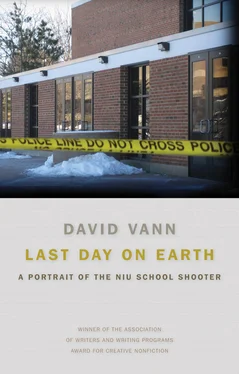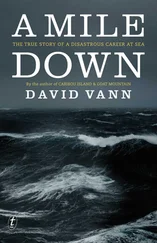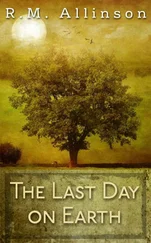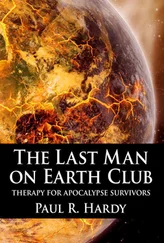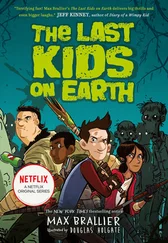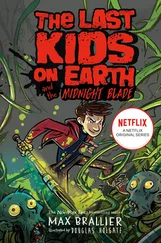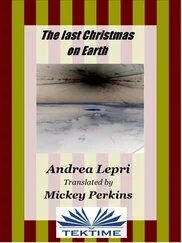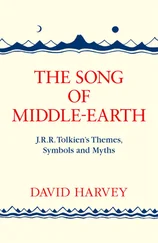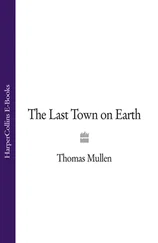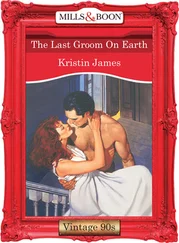My father flew down from Alaska every fall for this hunt. He was in his late thirties then, a dentist like his father, in years of despair leading toward his suicide. Grim-mouthed, hair receding, thin and strong, impatient. Everything in his life had somehow gone wrong, and his depression was something I had no way of understanding at my age. But he hadn’t always been like this. He’d hunted here since he was a boy, and he was known then for being light-hearted, a joker. Whenever he came back, he could see each year recorded in the place, wonder at who he had become.
At eleven, though, I could think only of who I would become. Shooting my first buck was an initiation. California law said I wasn’t allowed to kill a buck until I was twelve, but the same family law that gave me a pellet gun at seven, a 20-gauge shotgun at eight, and a.30-.30 carbine at nine said I was ready now.
I imagined sneaking up through pine trees or brush to make my first kill, but the weekend was rainy, so we hunted directly from the pickup. It felt unfair, even at eleven. The deer would be standing under the trees in the rain, flushed out from the brush. They didn’t like to get wet. I stood in the back of the pickup with my father, holding on for the ruts and bumps. And when I saw the buck, hidden mostly by a stand of half a dozen thin trunks, I immediately felt pounding at my temples. Buck fever. Heart going like a hammer, no breath. The moment of killing something large, another mammal, something that can feel individual, that moment is not like any other. You could call it many things — brutal, wrong, irresistible, natural, unnatural — but what it felt like to me was straight out of Faulkner, the rush of blood and belonging, of love for my father. This was the largest moment of my life so far, the moment of being tested.
I saw two points on one side of the buck’s horns, making it legal to shoot. I levered a shell in the chamber and raised the rifle, but my father put his hand on my shoulder.
“You have time,” he told me. “Rest an elbow.”
So I knelt in the bed, rested my left elbow on the side of the pickup, much more stable, and looked through the peep sight, lined it up with the deer’s neck. I couldn’t shoot the deer behind the shoulder because its body was hidden by the trees. I had only the neck, long and slim. And the sight was wavering back and forth.
I exhaled and slowly squeezed. The rifle fired, and the neck and head whipped down. I didn’t even notice the hard kick or the explosion. I could smell sulfur, and I was leaping over the side of the pickup and running toward the buck. My father let out a whoop that was only for killing bucks, and it was for me this time, and then my uncle did it, and my grandfather, and I was yelping myself as I ran over ferns and fallen wood and rock. I charged through the stand and then I saw it.
Its eyes were still open, large brown eyes. A hole in its neck, red blood against soft white and brown hide. I wanted to be excited still, wanted to feel proud, wanted to belong, but seeing the deer lying there dead before me in the ferns seemed only terribly sad. This was the other side of Faulkner, conscience against the pull of blood. My father was there the next moment, his arm around me, praising me, and so I had to hide what I felt, and I told the tale of how I had aimed for the neck, beginning the story, the first of what would become dozens of tellings. I slit the deer with my Buck knife, a gift from my father, slit the length of its stomach, but not deep, not puncturing innards. It seemed a monstrous task. I had both hands up to my elbows in the blood and entrails, not the overpowering foul bile of a deer that’s been gut shot but foul nonetheless, ripping out the heart and liver that I would have to eat to finish the kill, though luckily they could be fried up with a few onions first, not eaten raw. I pulled out everything and scraped blood, cut off testicles, then my father helped me drag it to the truck. He was grinning, impossibly happy and proud, all his despair gone, all his impatience. This was his moment even more than mine.
Back at camp, we hung the buck upside down from a pole and I skinned it, punching down between meat and hide with a fist. My uncle fried up the heart and liver, and then I was sitting at a wooden bench under a tin roof with a slice of heart on my plate. Two holes in the slice, one big, one smaller, two chambers. It was tough and tasted awful, but I was able to get it down. The liver was not so easy. Mushy and strong. I forced several swallows but managed to feed most of it to the dog under the table.
The next day, in the lower glades — wide expanses of dry yellow grass on an open hillside, fringed by sugar pines — I saw another buck. It was in short brush off to the side, a three-pointer this time, bigger. I aimed for the neck again but hit it in the spine, in the middle of its back. It fell down instantly. Head still up, looking around at us, but it couldn’t move the rest of its body. So my father told me to walk up from behind and finish it off execution-style, one shot to the head from five feet away.
I remember that scene clearly. The big buck and its beautiful antlers, its gray-brown hide, the late-afternoon light casting long shadows. After all the rain, the air was clear and cool, distances compressed, even in close, as if through a View-Master. As if I were looking at this deer through a magnifying glass. I remember staring at the back of his head, the gray hide between his antlers, the individual hairs, white-tipped.
“Be careful not to hit the horns,” my father told me.
I walked up very close behind that deer, leaned forward with my rifle raised, the barrel only a few feet from the back of his head, and he was waiting for it, terrified but unable to escape. I could smell him. He’d turn his head around far enough to see me with a big brown eye, then turn away again to look at my father. I sighted in and pulled the trigger.
After that, I began missing deer, closing my eyes when I shot. And I also made up imaginary deer. The next fall, when we split up to hike down through brush, I imagined a deer leaping out in front of me. The blood came to my ears, my breath gone, and it was the same as a real buck. I levered a shell in and fired, imagined the buck leaped at just that moment, arcing over the bullet, and I fired again.
My father came running, arrived breathless. “Did you get it?”
“It got away,” I said.
“Did you wound it?”
“I don’t think so. It was leaping. It leaped right over the bullet.”
My father and uncle and I spent an hour searching everywhere for blood as I retold the story several times, how the light looked on its hide, a big three-pointer.
My father would finally catch on, though. We were on an outcropping of rocks over the big burn, an area consumed by fire years before, with only shorter growth now. A buck leaped out from a draw and bounded across the hillside opposite us.
My father was hunting with his.300 magnum, and he was an excellent shot, but this deer was far away and moving fast and erratically, dodging bushes and rocks. I was firing, too, but only pointing the gun in the general direction, closing my eyes, and pulling the trigger. I opened my eyes in time to see one of my bullets lift a puff of dirt about fifty feet from the buck, and my father saw this, too. He paused, looked over at me, then fired again.
This was the last time we hunted, and we never talked about what happened.
I turned thirteen that fall, after the hunt, and I saw very little of my father. At Christmas, he was having troubles I didn’t understand, crying himself to sleep at night. He wrote a strange letter to me about regret and the worthlessness of making money. At the beginning of March is when he asked whether I would come live with him in Fairbanks, Alaska, for the next school year, eighth grade.
Читать дальше
